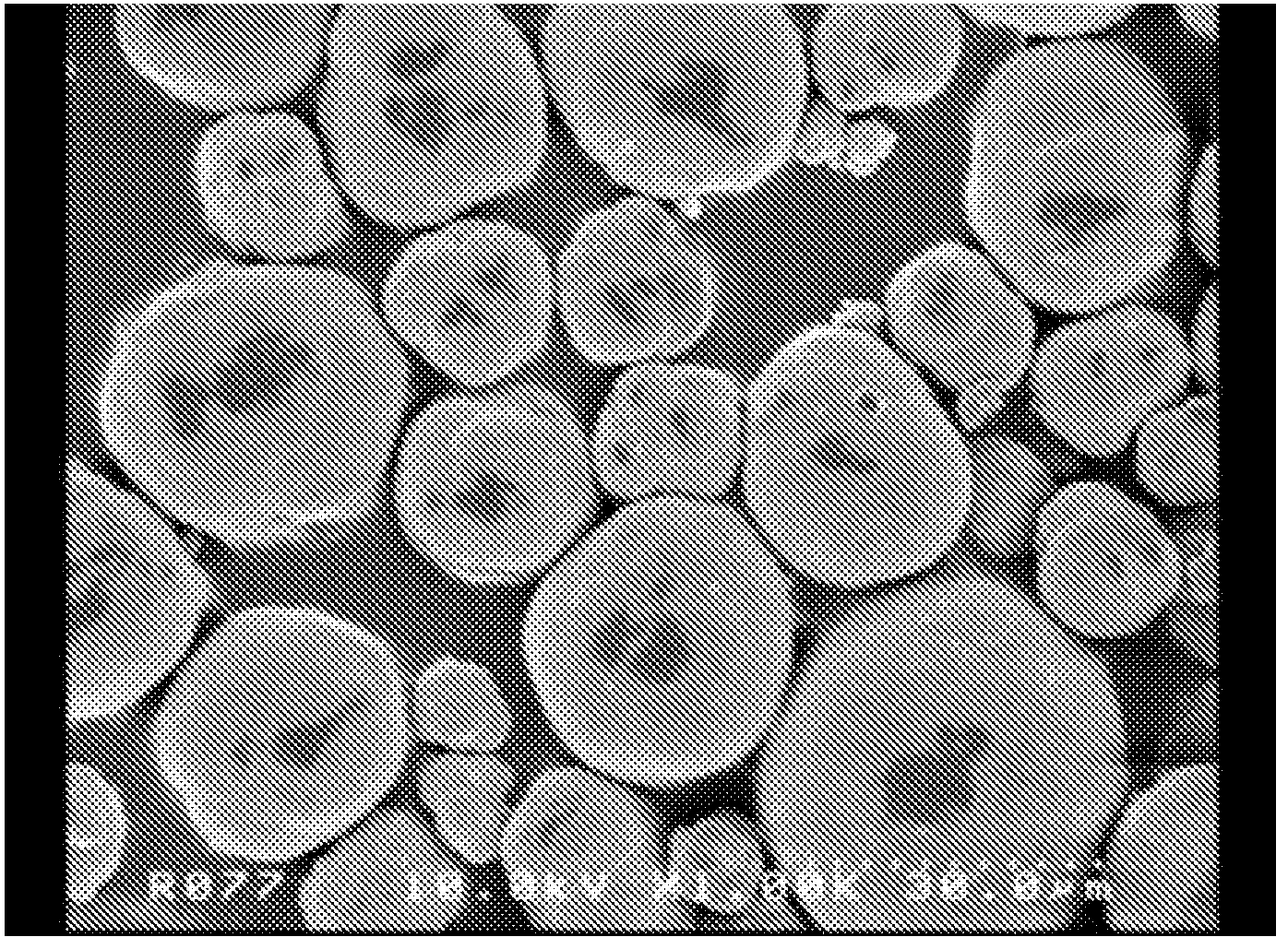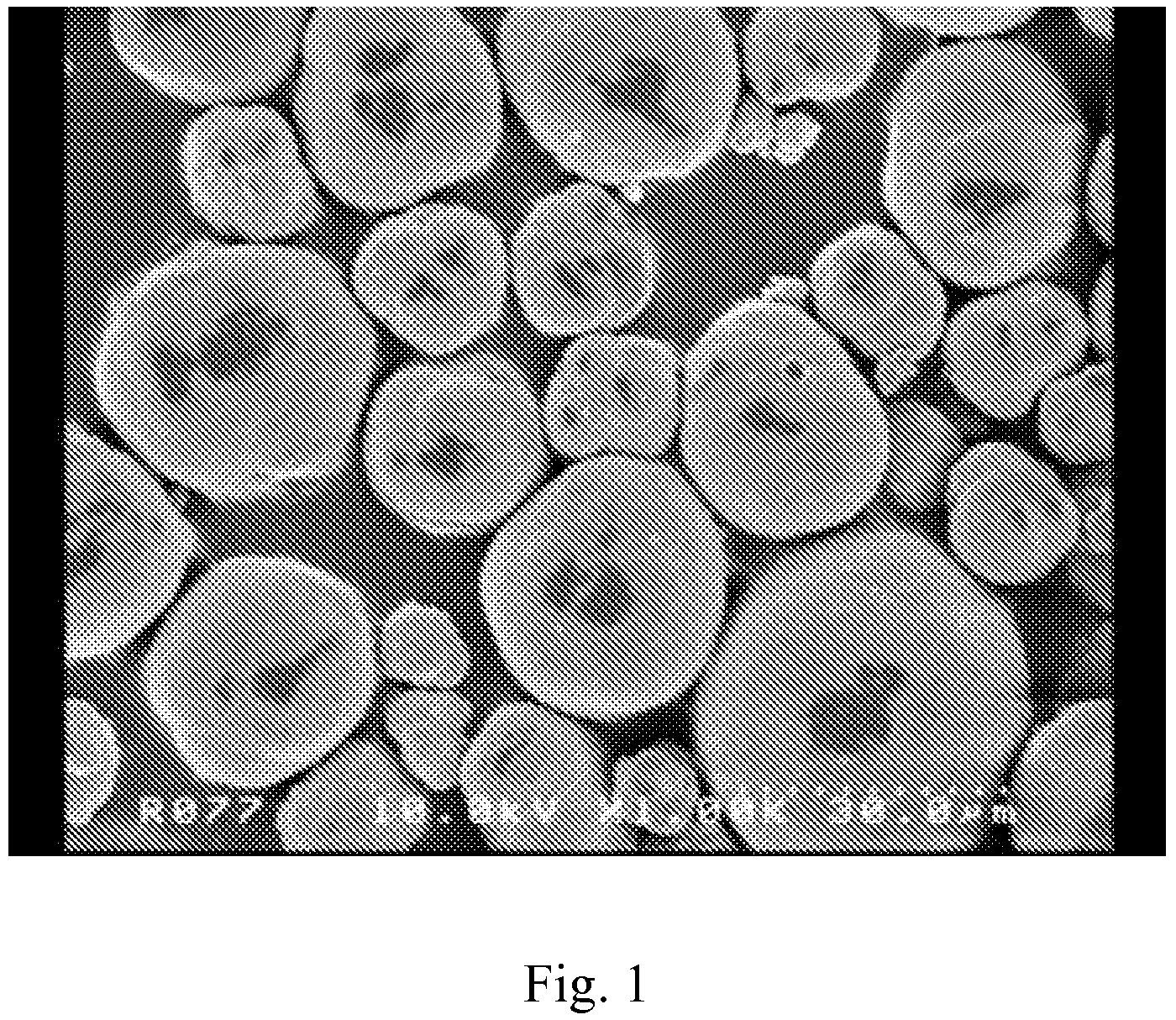Composite carbonate and method for producing the same
a composite carbonate and carbonate technology, applied in the field of composite carbonate, can solve the problem that the filling density of the positive electrode active material in the electrode is low, and achieves the effect of high specific surface area, excellent battery performance and large tap density
- Summary
- Abstract
- Description
- Claims
- Application Information
AI Technical Summary
Benefits of technology
Problems solved by technology
Method used
Image
Examples
example 1
[0059]
[0060]In purified water, 139 g (0.58 mol) of nickel chloride hexahydrate, 116 g (0.58 mol) of manganese chloride tetrahydrate and 139 g (0.58 mol) of cobalt chloride hexahydrate were dissolved, and then the solution thus obtained was further diluted with purified water to 650 ml to prepare the solution A.
[0061]
[0062]In purified water, 720 g (8.57 mol) of sodium hydrogen carbonate was dissolved, and the solution thus obtained was further diluted with purified water to 9 L to prepare the solution B.
[0063]The compositions of these solutions were as follows.
[0064]Solution A: Ni: 0.9 mol / L, Mn: 0.9 mol / L, Co: 0.9 mol / L, Cl: 5.4 mol / L
[0065]Solution B: CO3: 0.95 mol / L, Na: 0.95 mol / L
[0066]In a 300-ml overflow reaction vessel, 100 ml of purified water was placed, and while the reaction solution temperature was being maintained at 80° C. and the reaction solution was being stirred at 1200 rpm, the total amount of the solution A and the total amount of the solution B were simultaneously...
example 2
[0097]The composite carbonate obtained in Example 1 and lithium carbonate (average particle size: 4.5 μm) were weighed out in such a way that the ratio (Li / M) of the number of moles of the lithium atoms in lithium carbonate to the total number of moles (M) of the nickel atoms, manganese atoms and cobalt atoms in each of the composite carbonates was 1.03, and each of the composite carbonates was mixed with lithium carbonate sufficiently with a mixer; thus homogeneous mixtures were obtained.
[0098]Next, each of the thus obtained mixtures was baked at 800° C. for 10 hours in the atmosphere, then cooled, thereafter pulverized and classified to yield a lithium nickel manganese cobalt composite oxide. The physical properties of each of the thus obtained lithium nickel manganese cobalt composite oxides were measured in the same manner as described above, and the results thus obtained are shown in Table 2.
PUM
| Property | Measurement | Unit |
|---|---|---|
| tap density | aaaaa | aaaaa |
| BET specific surface area | aaaaa | aaaaa |
| particle size | aaaaa | aaaaa |
Abstract
Description
Claims
Application Information
 Login to View More
Login to View More - R&D
- Intellectual Property
- Life Sciences
- Materials
- Tech Scout
- Unparalleled Data Quality
- Higher Quality Content
- 60% Fewer Hallucinations
Browse by: Latest US Patents, China's latest patents, Technical Efficacy Thesaurus, Application Domain, Technology Topic, Popular Technical Reports.
© 2025 PatSnap. All rights reserved.Legal|Privacy policy|Modern Slavery Act Transparency Statement|Sitemap|About US| Contact US: help@patsnap.com


